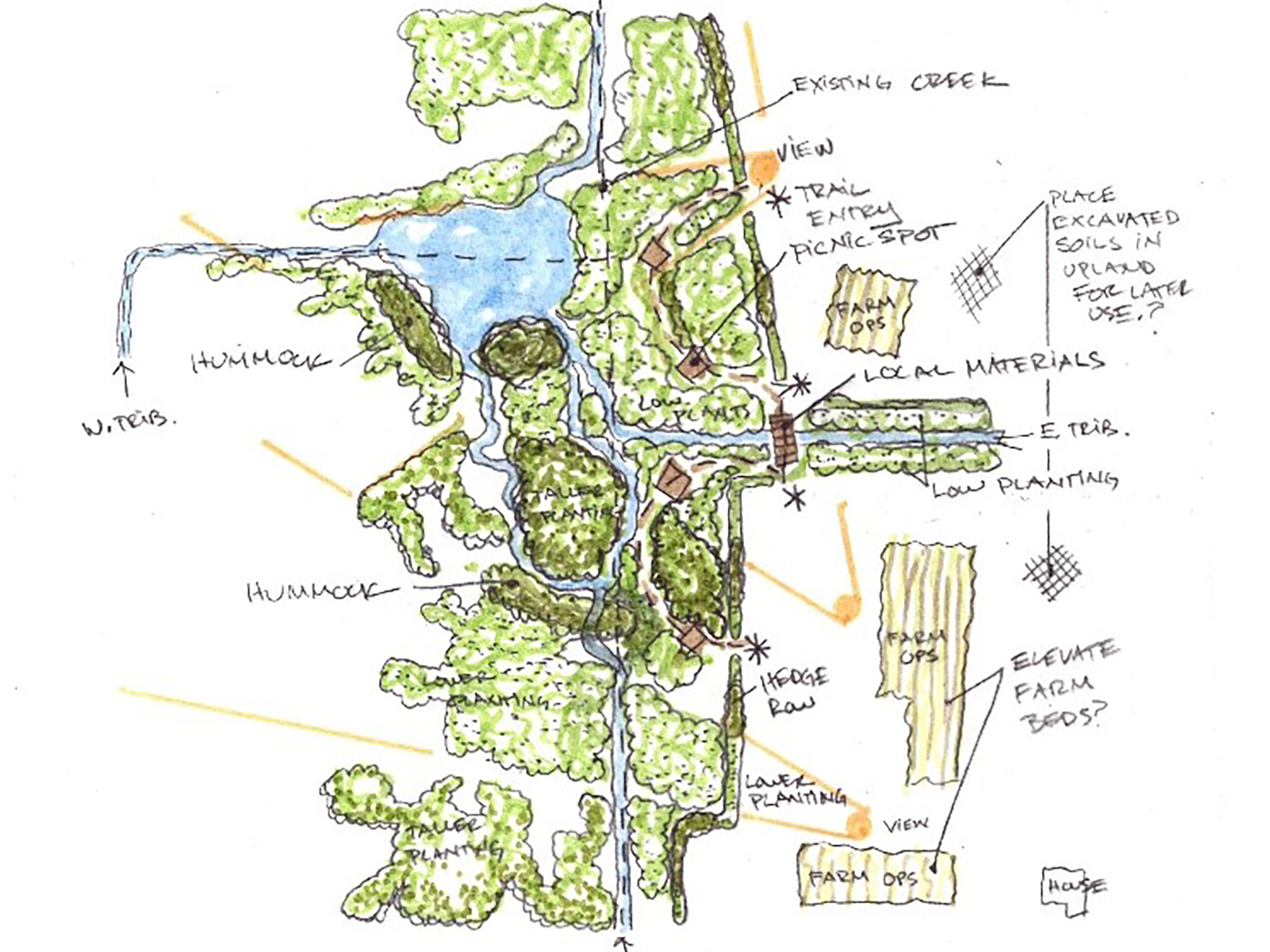
Kodama Farm landscape will include restored streams and wetlands as well as a new forested corridor to keep waters cool for Coho salmon and other aquatic species.
River the farm dog sitting by one of Kodama Farm's fields. Image courtesy: Jefferson Land Trust
On the 45-acre Kodama Farm south of Chimacum in Jefferson County, summer and winter Coho salmon will soon be flourishing just like the raised crop beds and no-till farming.
We recently invested $538,000 to help restore aquatic habitat on the agricultural property, located on Beaver Valley Road about 2.5 miles south of Chimacum on the Olympic Peninsula.
We provided $330,000 to acquire a conservation easement and $208,000 to help design wetland and habitat restorations plans for the active farm site.
Multi-year, multi-party effort
Designing wetland restoration plans for Kodama Farm
The multi-year effort started in 2016 and involved numerous entities including willing Kodama farmers, Jefferson County Conservation District, Jefferson Land Trust, North Olympic Salmon Coalition, and Natural Systems Design.
The conservation easement for the Kodama farm is the first in the Puget Sound basin to use federal National Estuary Program (NEP) funding from the U.S Environmental Protection Agency to restore riparian areas in agricultural landscapes.
Riparian areas include the unique plant and soil habitats where land and water meet along the margins of a wetland or estuary, or along the banks of a stream or river.
Kodama Farm home to historic salmon habitat
The Kodama Farm was selected for restoration and protection because the property is home to historic summer and winter Coho salmon-rearing habitat.
Most of the property was a wetland that was converted to pasture land decades ago. Streams were straightened and moved into ditches while the forest riparian corridor was removed. However, the west side of the 45-acre farm property still contains wetlands connected to Chimacum Creek.
Novel ‘whole farm’ conservation approach
Mapping out a concept for the farm that meets future farming needs and conservation needs.
Taking a novel “whole farm” approach to protect and restore the Kodama parcel for salmon while putting sustainable agricultural practices in place provides multiple environmental and community benefits.
Reforesting the riparian zone will restore an important ecosystem and improve water quality for salmon through shading.
The Jefferson Land Trust used Ecology’s grant funding to purchase the $300,000 conservation easement covering the entire 45-acre property. The easement also includes a future restored riparian zone encompassing another 20 or so acres.
The easement also will help ensure the parcel remains agriculturally viable by safeguarding into perpetuity agricultural soils and farming activities outside the riparian and habitat areas.
Kodama Farm's next generation of farmers, Ben and Grace Thompson and Matt Montoya. Image courtesy: Kodama Farm
Helping a new generation of farmers
The whole farm approach is also affording an opportunity for a new generation of farmers to secure the property.
In a lease-to-own arrangement with the retiring farmer, the new Kodama farmers were eager to initiate a conservation easement on the property and open to restoring salmon-rearing habitat within the proposed easement area.
By reducing potential development and preventing the property from being subdivided, both the easement and new forest management activities on the property will reduce adverse water quality impacts to Chimacum Creek and associated wetlands.
With the easement in place, project partners plan to significantly restore the section of Chimacum Creek flowing through the property. The first step will be to create a more complex stream channel to restore important salmon-rearing habitat.
The Kodama farmers envision an educational facility with a view shed to observe wildlife, permanent raised beds for planting, a picnic spot, and trails that skirt the edge of the conservation area for educational walks.
The farm will employ sustainable techniques — including subterranean irrigation, no-till farming to decrease soil erosion, organic fertilizers, and integrating perennial plants and trees, including edible, medicinal, and flowering varieties to attract pollinating insects.





